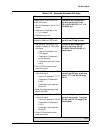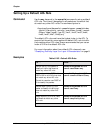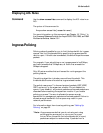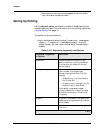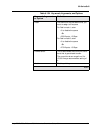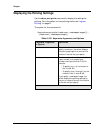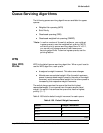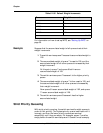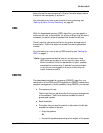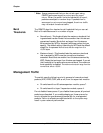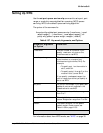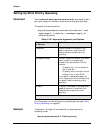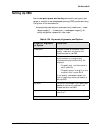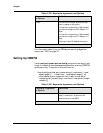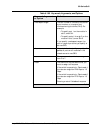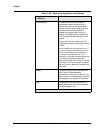
Avaya P550R, P580, P880, and P882 Multiservice Switch User Guide, v5.3.1 -37
80-Series QoS
before the switch services queue 5. Queue 5 must be empty before
the switch services queue 4, and so on.
For information on how to set up strict priority queueing, see
“Setting Up Strict Priority Queueing” on page 40.
CBQ
With the class-based queuing (CBQ) algorithm, you can specify a
maximum bit rate, or bandwidth, for a queue. When that bit rate is
exceeded, the switch drops all packets that exceed the bit rate.
The bit rate that you set should be the long-term average rate of
transmission. Traffic that does not exceed this rate is guaranteed
transfer.
For information on how to set up CBQ queueing, see “Setting Up
CBQ” on page 41.
* Note: Avaya recommends that you do not set a port using
CBQ as the source port or mirror port for a port mirror.
When the switch limits the bandwidth of a port, packets
are subject to random drop. If packets from a source port
or mirror port are dropped, the mirror traffic may not
match the source traffic.
CBWFQ
The class-based weighted fair queueing (CBWFQ) algorithm is a
combination of the CBQ and WFQ algorithms. CBWFQ makes more
complex management of traffic possible. Using CBWFQ, you can set:
■ The maximum bit rate.
The bit rate that you set should be the long-term average rate
of transmission. Traffic that does not exceed this rate is
guaranteed transfer.
■ Burst thresholds
■ The action that you want the switch to take when the bit rate
exceeds the maximum bit rate.
— Drop the packets
Or
— Forward the packets according to the weight of the queue



